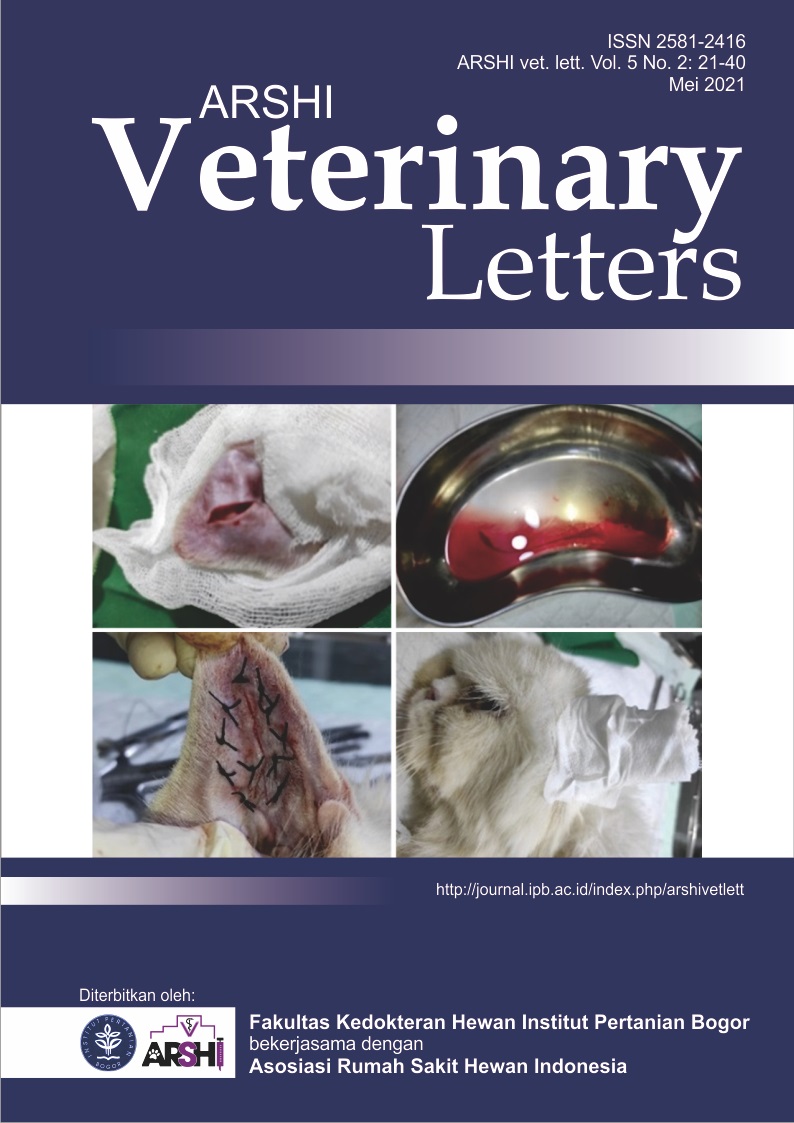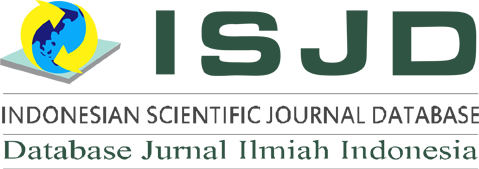Use of the MLX 90164 sensor and the ThingSpeak platform for internet of things-based animal body temperature check
Abstrak
Sensor MLX 90614 adalah sensor IR yang digunakan untuk mengukur suhu tanpa kontak. Sensor ini dapat mengukur suhu objek dan suhu lingkungan pada kisaran -40 oC – 125 oC. Sensor ini banyak digunakan di berbagai bidang seperti pengukuran suhu ruangan, suhu mesin, suhu lingkungan, dan suhu tubuh. Sensor MLX 90614 belum sepenuhnya dapat digunakan secara langsung untuk melakukan pengukuran suhu karena default program yang sederhana sehingga hasil pengukuran tidak akurat. Oleh karena itu diperlukan optimasi untuk meningkatkan nilai presisi pendugaan suhu internal tubuh menggunakan sensor ini. Metode yang dilakukan dalam penelitian ini menggunakan 6 ekor domba percobaan. Pemeriksaan suhu dilakukan melalui termometer kontak dan dibandingkan dengan pemeriksaan non-kontak oleh sensor MLX 90614. Hasil penelitian menunjukkan suhu rata-rata termometer kontak adalah 39,28±0,09 oC sedangkan hasil sensor MLX adalah 35,78±1,38 oC. Perbedaan suhu rata-rata adalah 3,5±1,48 oC. Hasil penelitian menunjukkan bahwa faktor koreksi perbedaan suhu perlu dimasukkan dalam kode skrip saat menjalankan sensor MLX 90614. Hasil pemeriksaan suhu oleh sensor dapat langsung dikirim secara real time ke platform ThingSpeak sehingga hasilnya dapat disimpan dan diakses di berbagai tempat dengan mudah. Penggunaan sensor MLX 90614 yang dipadukan dengan konsep IoT menggunakan ThingSpeak dapat mempermudah proses pemeriksaan suhu tubuh non-kontak, serta membuat data dapat diakses dan disimpan dengan mudah.
Unduh
Referensi
Ahmed A, Abdullah MN. 2020. Design of a contactless body temperature measurement system using Arduino. Indonesian Journal of Electrical Engineering and Computer Science. 19(3): 1251-1258.
Costanzo S, Flores A. 2020. A non-contact integrated body ambient temperature sensors platform to contrast COVID-19. Electronics. 9: 1-17.
Merck Veterinary Manual. 2015. www.merckvetmanual.com/special-subjects/reference-guides/normal-rectal-temperature-ranges [12/01/21]
Morrison SF. 2016. Central control of body temperature. F1000 Faculty Rev-880. DOI: 10.12688/f1000research.7958.1
Osilla EV, Jennifer L, Marsidi, Sharma S. 2020. Physiology, Temperature Regulation. StatPearls [Internet] https://www.statpearls.com/ArticleLibrary/viewarticle/30050
Parida D, Behera A, Naik JK, Pattanaik S, Nanda RS. 2019. Real-time environment monitoring system using ESP8266 and ThingSpeak on internet of things platform. In2019 International Conference on Intelligent Computing and Control Systems (ICCS) 2019 May 15 (pp. 225-229). IEEE.
Pasha S. Thingspeak Based Sensing and Monitoring System for IoT with Matlab Analysis. International Journal of New Technology and Research. 2016. 2(6): 19-23.
Ray PP. 2016. A survey of IoT cloud platforms. Future Compu-ting and Informatics Journal. 1(1-2): 35-46.
Tansey SA, Christopher DJ. 2015. Recent Advances in thermoregulation. Advances in Physiology Education. 39(3): 139-148.
Copyright (c) 2021 CC-BY-SA

This work is licensed under a Creative Commons Attribution-ShareAlike 4.0 International License.
Authors who publish with this journal agree to the following terms:
1. Authors retain copyright and grant the journal right of first publication with the work simultaneously licensed under a Creative Commons Attribution License that allows others to share the work with an acknowledgement of the work's authorship and initial publication in this journal.
2. Authors are able to enter into separate, additional contractual arrangements for the non-exclusive distribution of the journal's published version of the work (e.g., post it to an institutional repository or publish it in a book), with an acknowledgement of its initial publication in this journal.
3. Authors are permitted and encouraged to post their work online (e.g., in institutional repositories or on their website) prior to and during the submission process, as it can lead to productive exchanges, as well as earlier and greater citation of published work (See The Effect of Open Access).












